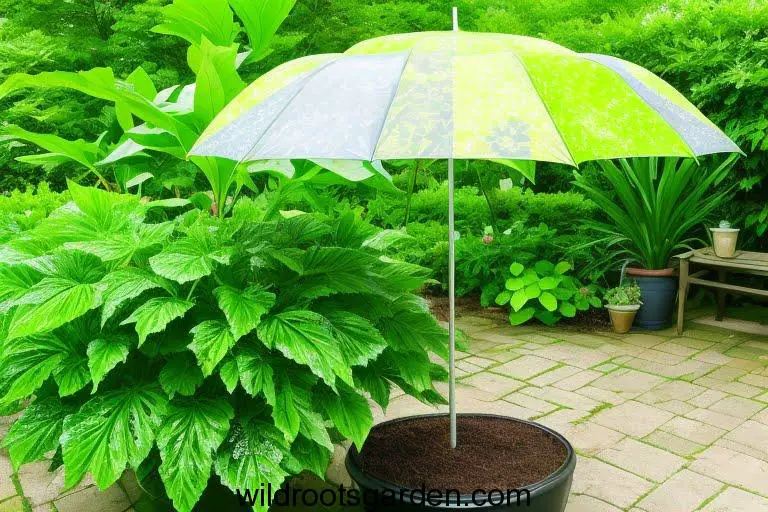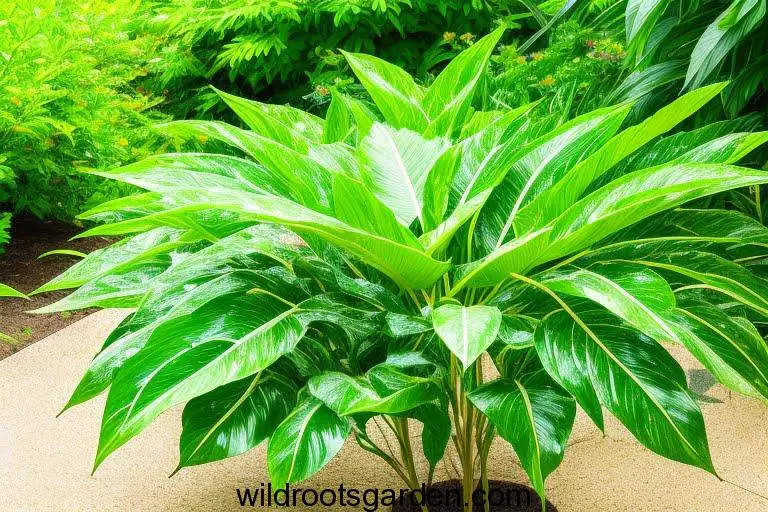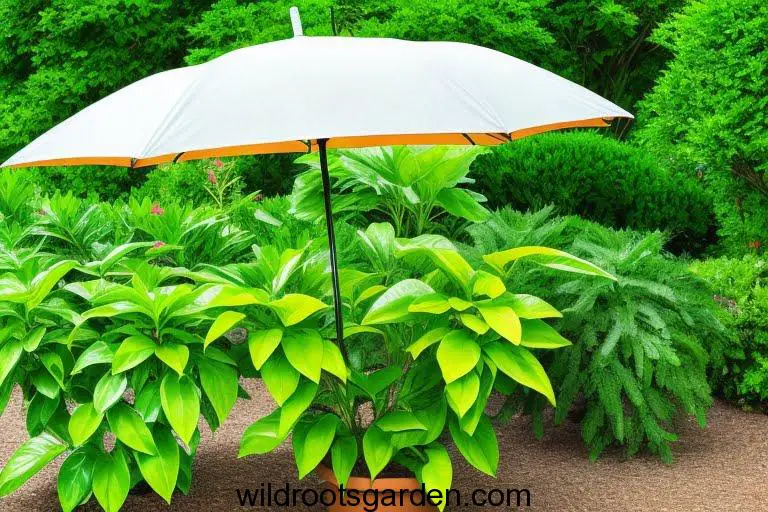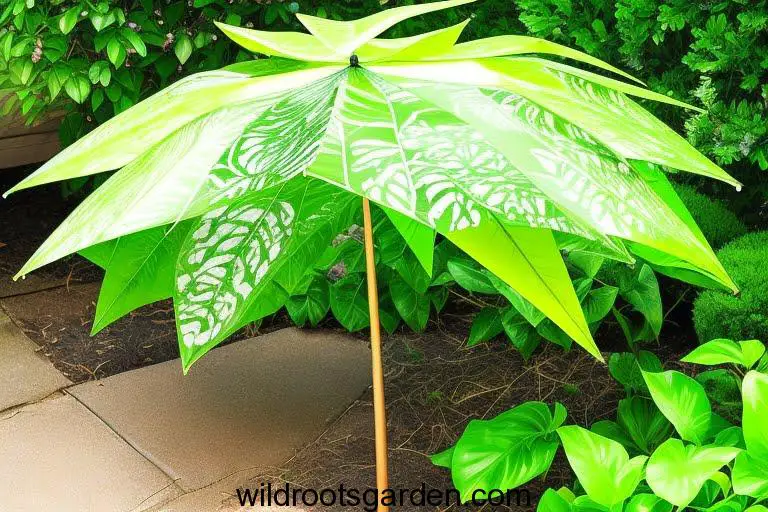As summer is approaching, you might be curious about whether you can place your precious umbrella plant outdoors. Schefflera spp., commonly known as umbrella plants, are well-known for their striking foliage and easy-to-care nature, making them a popular choice for indoor plants. This article will discuss the benefits, things to consider, and potential issues of keeping your umbrella plant outside during the summer. So, let’s dive in and find out if your umbrella plant can enjoy the summer outside!
Table of Contents
Understanding the Umbrella Plant
Let’s take a moment to grasp the umbrella plant before we get into the nuances of outside installation. The thick, umbrella-shaped leaves of umbrella plants, which are native to tropical areas, lend an air of elegance to any indoor space. These plants are well-liked among fans of indoor gardening since they are adaptable and do well in a variety of lighting situations.

Caring for the Umbrella Plant
It’s essential to provide your umbrella plant with the proper care to preserve its health and well-being. A healthy umbrella plant needs regular watering, good lighting, and suitable soil. These are the three main requirements. You may create an atmosphere where the plant can thrive by attending to its basic needs.
Benefits of Keeping an Umbrella Plant Outside
Throughout the summer, having your umbrella plant outside might have some benefits. The additional natural light and clean air can encourage development and improve the health of the plant as a whole. A further benefit of external exposure for the umbrella plant’s long-term health is the chance to experience normal temperature changes.
Factors to Consider
Although it may seem enticing to move your umbrella plant outside, it’s vital to take into account many considerations before making a decision. Making an informed decision will be aided by evaluating the particular requirements of your plant and being aware of any potential risks.
Proper Placement and Light Requirements
Bright, filtered light is ideal for umbrella plants. It’s important to choose an outside location for your plant that offers the ideal ratio of sunlight to shade. Avoid leaving your umbrella plant in the sun for long periods since it might burn the leaves and harm the plant.

Temperature and Humidity Considerations
The ideal temperature range for umbrella plants is between 60°F and 75°F (15°C and 24°C). Even if they can withstand somewhat greater temperatures, it’s crucial to keep an eye on the weather during the summer. The plant can flourish outside if the humidity is kept at an appropriate level by spraying the leaves or using a humidifier.
Watering and Soil Needs
Your umbrella plant’s watering requirements may change depending on the weather outside. The soil may dry up more quickly in the presence of higher heat and sunlight, demanding more regular watering. Make sure the soil is continuously moist but not soggy. Important components of outdoor care include selecting a potting mixture that drains effectively and ensuring adequate drainage for the plant’s container.
Fertilizing the Umbrella Plant
The summertime, when the umbrella plant is actively growing, is the ideal time to fertilize it frequently. A balanced, water-soluble fertilizer can be applied every two to four weeks to supply the nutrients required for healthy growth. Following the directions on the packaging is crucial, as overfertilizing might harm the plant.

Protecting the Umbrella Plant from Pests
Placing your umbrella plant outdoors exposes it to potential pests like aphids, spider mites, or mealybugs. Check the plant frequently for symptoms of infestation and take the necessary precautions, including using insecticidal soap or home treatments, to stop pest damage. Maintaining the health of your umbrella plant depends on early discovery and rapid response.
Monitoring and Maintenance
When your umbrella plant is outside having fun, it’s important to routinely check on how it’s doing. Watch the plant’s development, leaf color, and general health. Any problems, like wilting, discoloration, or pest infestation, must be dealt with right away.
Potential Risks of Outdoor Placement
Although outdoor location can be advantageous, it’s crucial to be aware of any associated concerns. Your umbrella plant might be harmed by extreme weather conditions, such as sweltering heat waves or a lot of rain. Moreover, unexpected weather changes or temperature reductions might harm an animal’s health. These risks can be reduced by carefully considering the weather prediction and offering appropriate protection as necessary.

Bringing the Umbrella Plant Indoors
It’s time to consider bringing your umbrella plant back inside as summer comes to an end. Check the plant for pests or other indications of stress before bringing it indoors. Make sure the plant adjusts successfully to the decreased light levels and controlled environment by progressively acclimating it to indoor circumstances.
Conclusion
Finally, moving your umbrella plant outside in the summer might be lucrative because it will provide it access to fresh air and natural light. Before choosing a choice, it’s important to take into account aspects like suitable placement, lighting needs, temperature, watering requirements, and potential threats. Your cherished umbrella plant can live happily if you give it the proper care and keep an eye on its development.
FAQs
Can I leave my umbrella plant outside all summer?
Generally speaking, it’s advised to expose your umbrella plant to the outdoors for brief intervals to provide it with the ideal combination of light, temperature, and humidity. The long-term outside placement could put the plant at risk from things like pest infestations and severe weather.
How often should I water my umbrella plant when it’s outside?
Your umbrella plant’s watering requirements may change depending on the weather outside. When the top inch of soil feels dry, water as needed. Regularly check the soil moisture. Make sure the soil is continuously moist but not soggy.
Can direct sunlight harm my umbrella plant if it’s outside?
Indeed, extended exposure to direct sunlight can cause sunburn and other damage to the leaves of your umbrella plant. Choose a location that is suitable and offers bright, indirect light or shade during the warmest part of the day.
What should I do if my umbrella plant gets infested with pests while outside?
Check your umbrella plant frequently for indications of a pest infestation. If you see pests like aphids, spider mites, or mealybugs, act quickly to take care of the problem. To keep pests under control and safeguard the health of your plant, use insecticidal soap or natural solutions.
When should I bring my umbrella plant back indoors after the summer?
It is advised to move your umbrella plant indoors when the summer winds down and the weather begins to cool. To ensure a smooth transition, check the plant for pests or indications of stress and gradually adapt it to the inside environments

